When it comes to long-range competition, the automatic assumption is that you need a riflescope that’s equal or greater in cost to most people’s house payment in order to compete. While you can certainly go that route, there’s also a lot to be said about budget-friendly glass that’s still more than qualified to take on the benchmark 1,000-yard shot. A case in point is Nikon’s new Black X1000, a scope engineered from the ground up to tackle the precision rifle game. I recently reviewed Nikon’s 4-16×50 version of the Black X1000, which featured an illuminated X-MOA reticle. I attached the scope to Ruger’s Precision Rifle in 6mm Creedmoor with a Leupold Mark 2 Integral Mounting System.
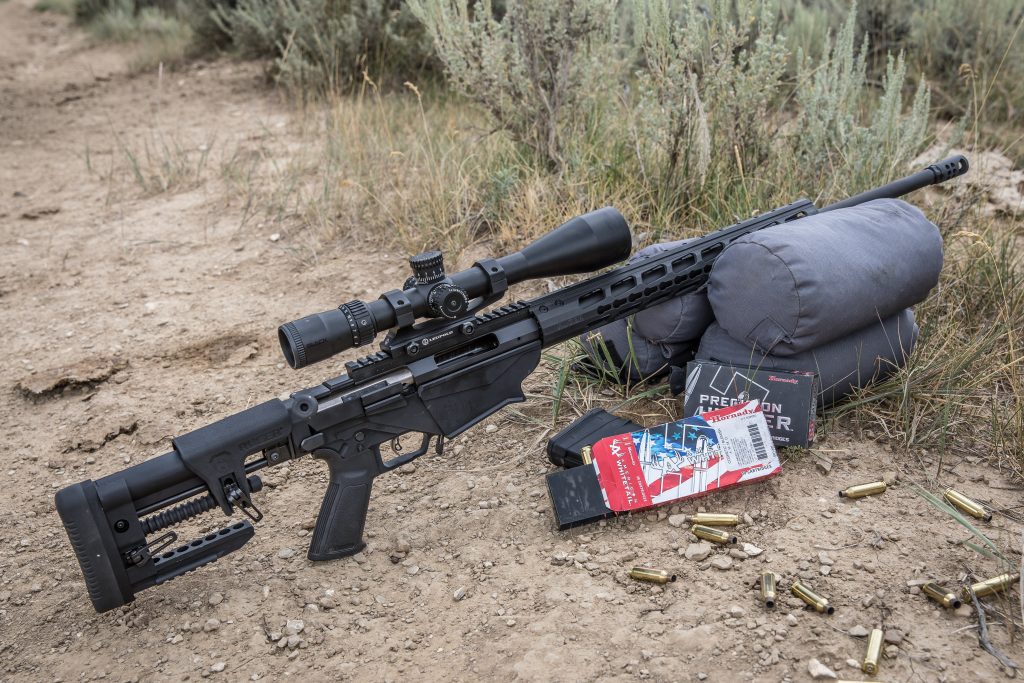
Paired with Ruger’s Precision Rifle in 6mm Creedmoor, the Nikon Black X1000 proved that it is a highly capable long-range optic.
SPECS
- Magnification: 4-16×50
- Objective Diameter: 50mm
- Tube Diameter: 30mm
- Weight: 24 oz.
- Overall Length: 14.8 in.
- Finish: Matte Black
- Eye Relief: 3.6-4 in.
- MSRP: $599
- Manufacturer: Nikon, NikonSportOptics.com
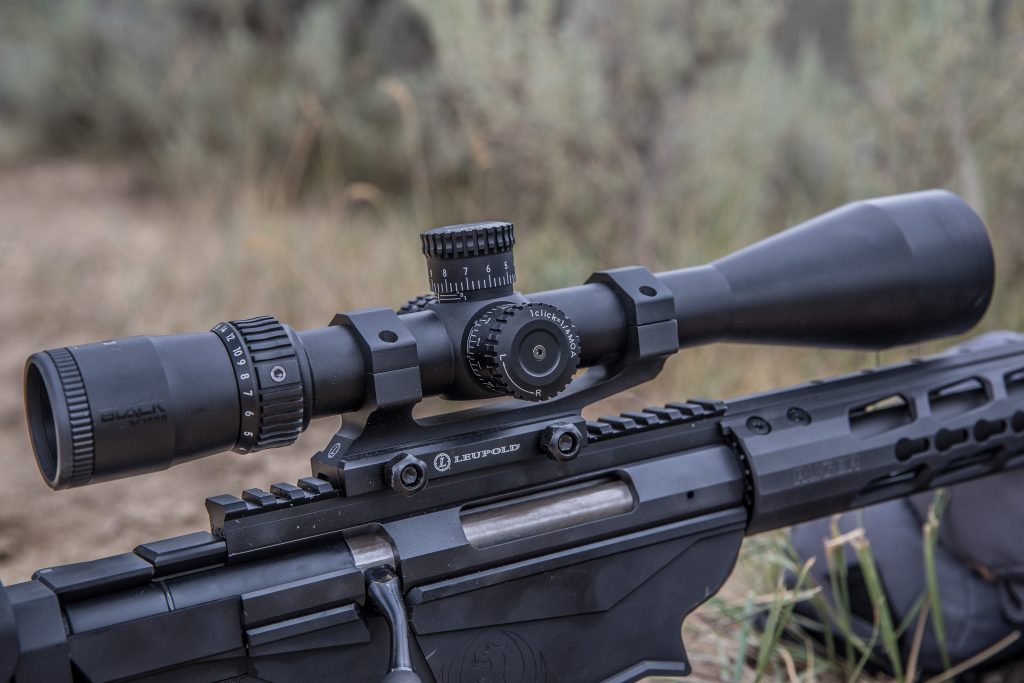
Nikon’s Black X1000 riflescope is a fully-capable long-range optic with 90 MOA of internal adjustment and a very reasonable price tag under $600.
Built for Distance
Nikon’s Black line of riflescopes is designed for precision rifle shooting and features several variants, including the 4-16×50 reviewed here and a 6-24×50 version. The scopes come either illuminated or not and are available with either the X-MOA or X-MRAD reticle. All models feature a second focal (SF) plane reticle, which means it is located behind the magnification ring and remains as a fixed size at every magnification. The tradeoff is that SF optics are generally less costly to produce (MSRP on the Black X1000 is $599), very reliable, and present a clear reticle throughout the magnification spectrum, but your holdover markers in the reticle will be different at every magnification. This creates a bit more of a headache for using the holdovers in the reticle if you intend to do anything other than set the scope to max power. A first focal plane scope, on the other hand, is generally more expensive but the reticle grows or shrinks as you change magnification, so your holdover markers are always the same.
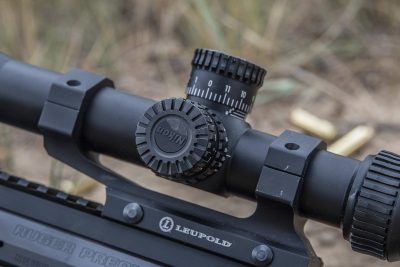
The left side turret houses one battery, a knob for illumination adjustment (10 different brightness settings), and parallax adjustment from 50 to 1,000 yards, then infinity.
The Black X1000 features 90 MOA of adjustment and external windage and elevation turrets clearly etched adjustments. During the review, I found that the turret adjustments were crisp, accurate and repeatable, an absolute essential for a precision rifle scope. Combined with the Precision Rifle’s 20 MOA Picatinny rail, the scope features plenty of adjustment for making the 1,000-yard shot, something the 6mm Creedmoor is also fully capable of. Both turrets are easily re-zeroed via a hex screw.
The scope also features 10 different illumination settings, with every stop in between serving as an “off” position. The battery (CR2032) seats under a removable cap on the left turret, which also features a ring for parallax adjustment from 50 to 1,000 yards, then infinity. All turrets and power selector ring feature heavily ridged rings for excellent grip. The lenses are fully coated and are anti-reflective, providing bright, sharp sight pictures at any magnification. I especially appreciated the quality glass when shooting in high-glare situations, and even as clouds rolled in and the sun disappeared I was still able to pick up steel targets at 600 and 1,000 yards without an issue.
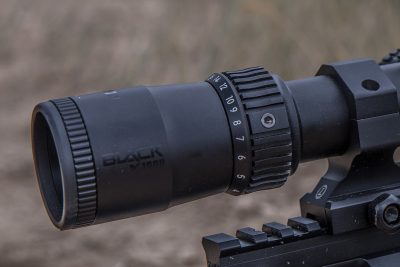
Plenty of eye relief and a 4-16 power selector ring make for clear, crisp sight picture at considerable ranges.
Accuracy Testing
The scope performed exceptionally well during accuracy testing on paper at 100 yards, and then again on steel targets ranged at 450, 600 and 1,000 yards. On paper with the Ruger Precision Rifle and 6mm Creedmoor factory ammunition from Hornady, the best group of the day was .312 inches. Group sizes remained consistent with steel targets at much greater distances, and each ¼-inch MOA adjustment proved exceptionally accurate. I found the parallax yardage adjustments to be incredibly accurate and focus crisp at each distance.
After completing accuracy testing at 100 yards, I set up steel targets at 450 yards and shot from the prone position from sandbags. Playing a 10-mph wind and 20 MOA of adjustment on the elevation turret (with a 100-yard zero), I slapped three shots with the 103-grain ELD-X on a 12×20-inch ShootSteel.com target on the lower center portion. I switched to the 108-grain bullets and had three shots in the same area. Moving to 600 yards, the results were similar and equally impressive. I was as impressed with the precision of the adjustments in the elevation turret as I was with the rifle and load, something that can’t be taken for granted with even spendier riflescopes. I then cranked the elevation turret to both ends of its rotation, then went back to my former 20 MOA adjustment. Impressively, the first shot hit exactly in the midst of the others.
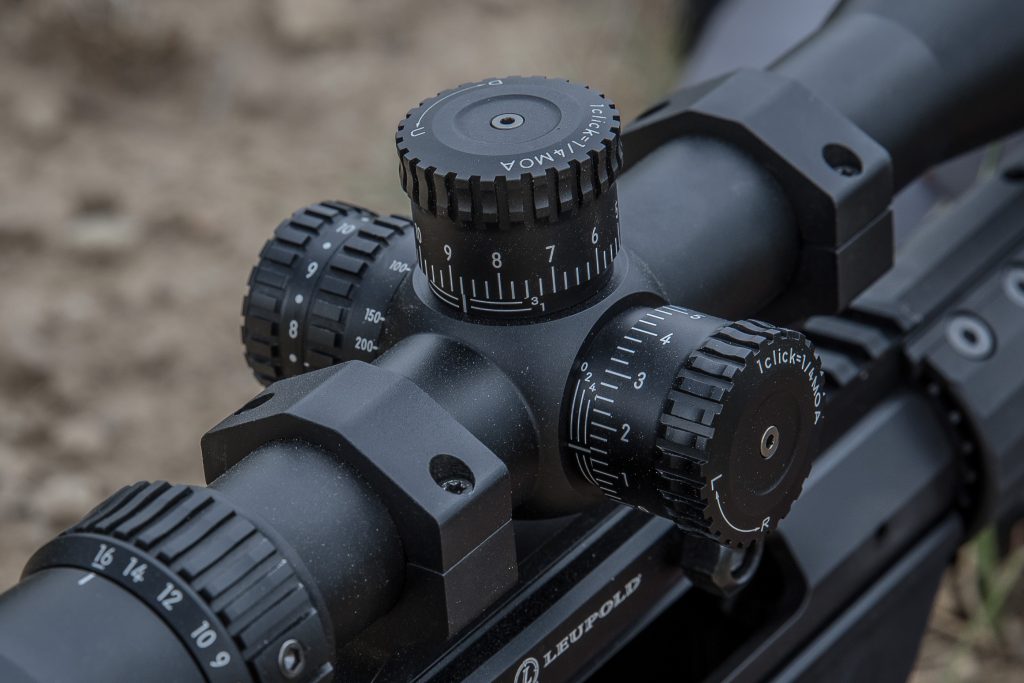
Both windage and elevation turrets feature ¼ MOA adjustments that are crisp, accurate, and repeatable. Two set screws make for easy re-zeroing.
For more information about Nikon scopes, click here.
To purchase Nikon scope on GunsAmerica, click here.

I have this scope in 6x24x50mm MRAD illuminated and it’s great. The optics are very bright and clear at all magnifications and the turrets are extremely repeatable. I prefer second focal plane, but if you want FFP, just get the FX1000.
WAIT!
A “long range” scope needs more than high magnification.
This scope line lacks the following:
1. turret stops
2. a good milrad reticle to use for hold-offs (“Christmas tree” style reticle)
3. FIRST Focal Plane
Any one wanting to use this scope for long range competition will be very disappointed.
Someone forgot to tell five decades of Army and Marine marksmen they needed all those doodads to get past 1000 yds.
If you can’t do it with a fixed 10x it isn’t the scope’s fault. The new Nikon X series s opens aren’t $3000 U.S.O.s or March’s but what they are is one of the best values in long range optics on the market today.
Nice scope. Except the designer didn’t leave room for Tactical Scope Rings!
I would like a price list of your products .